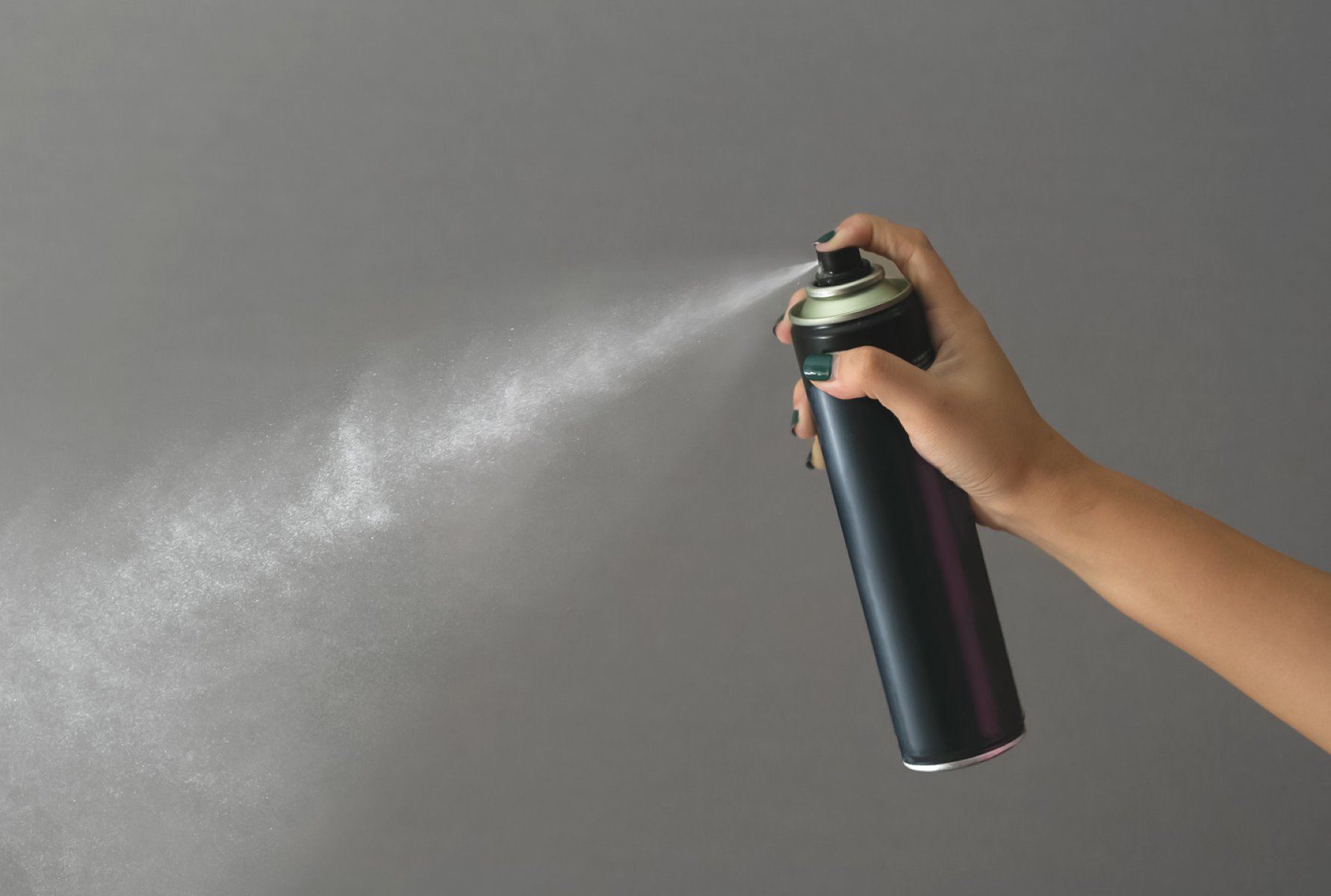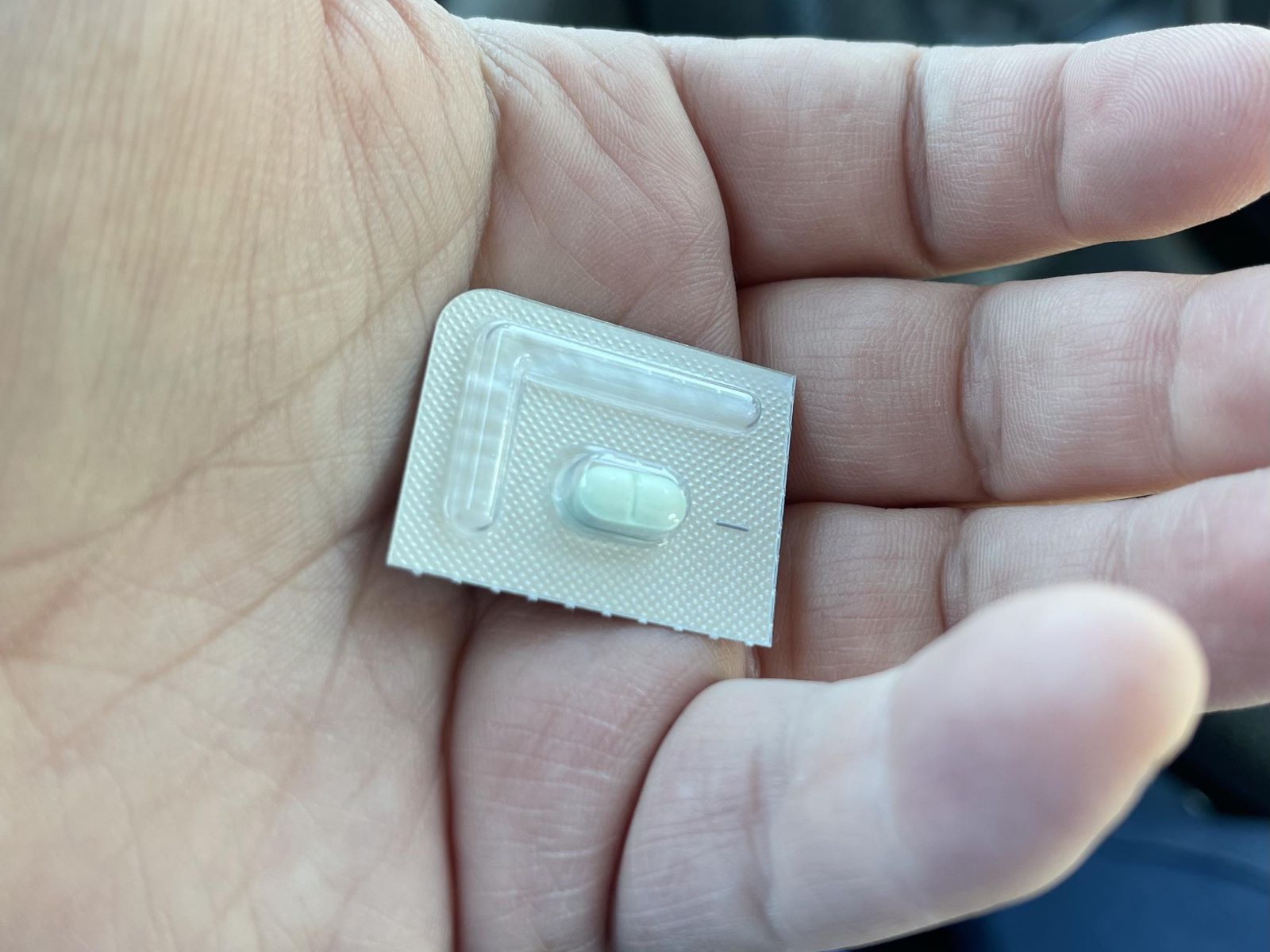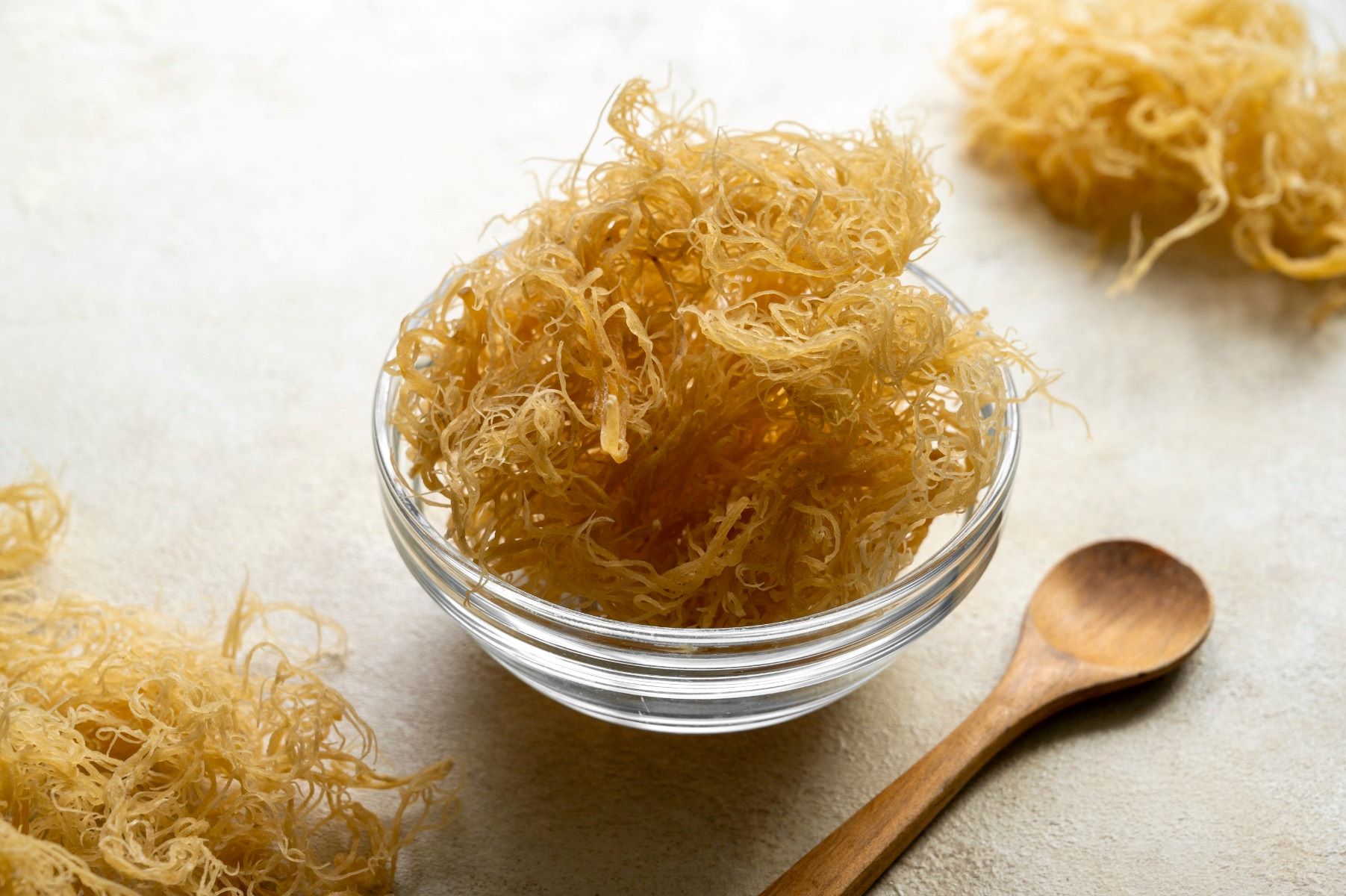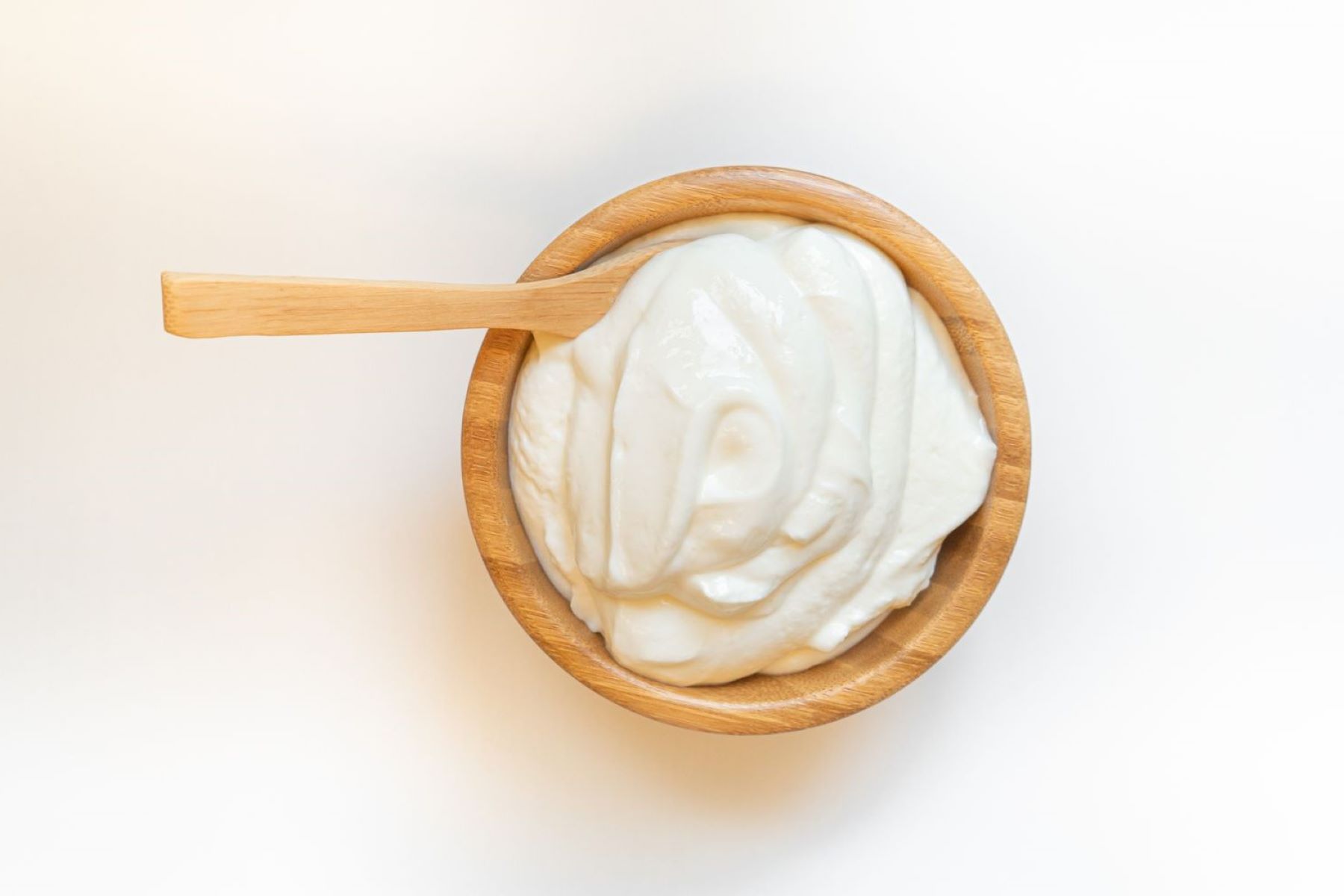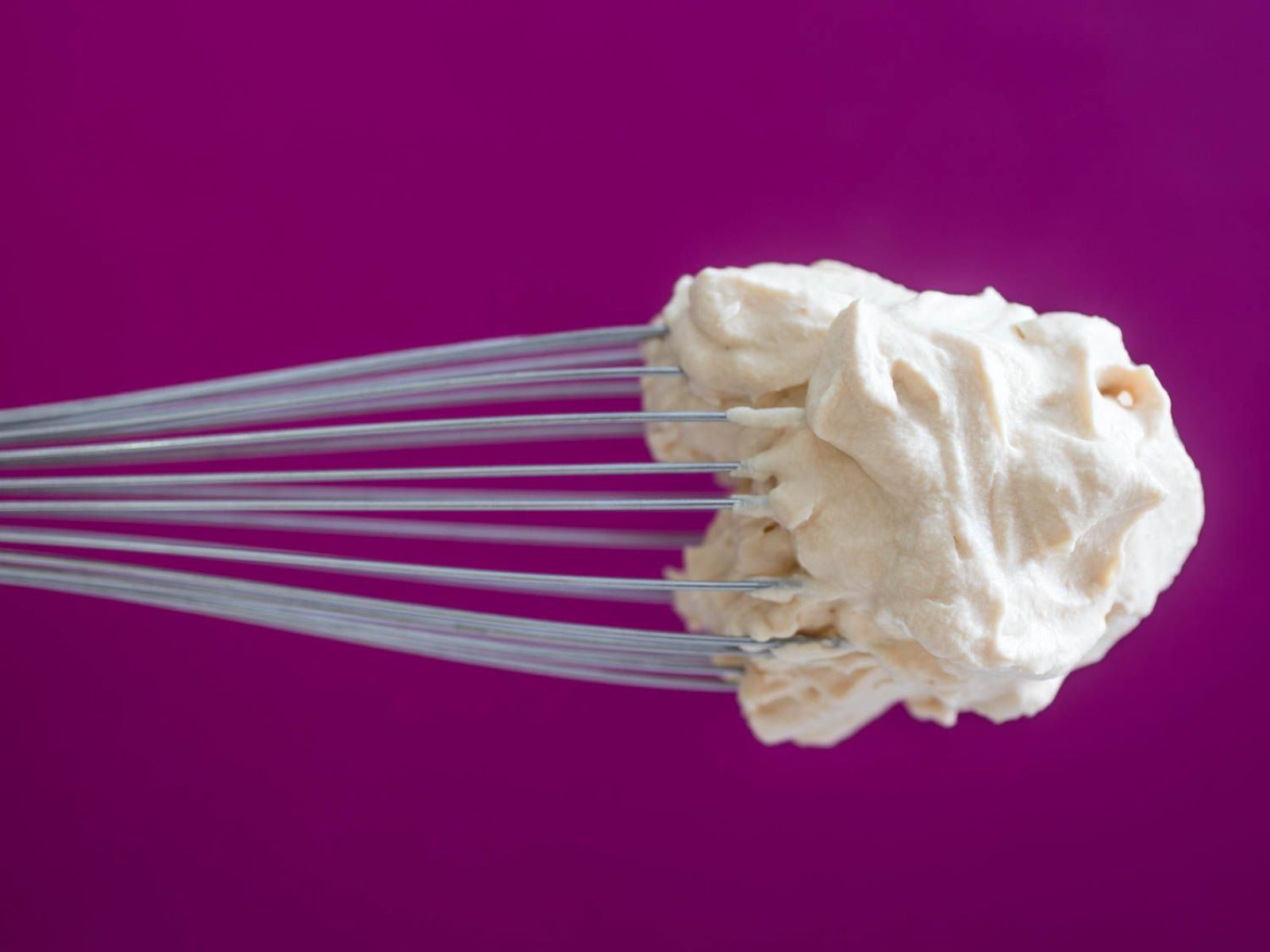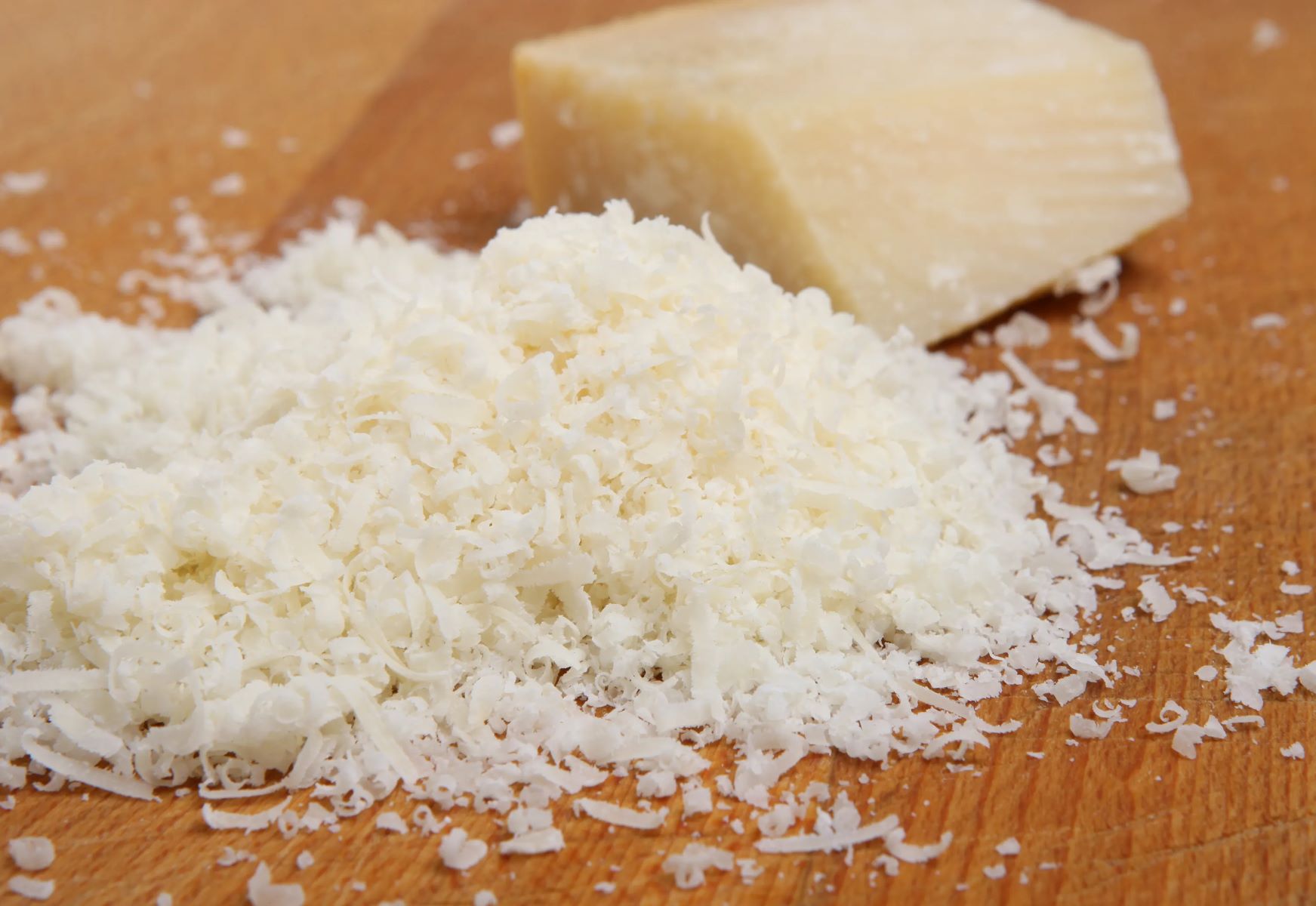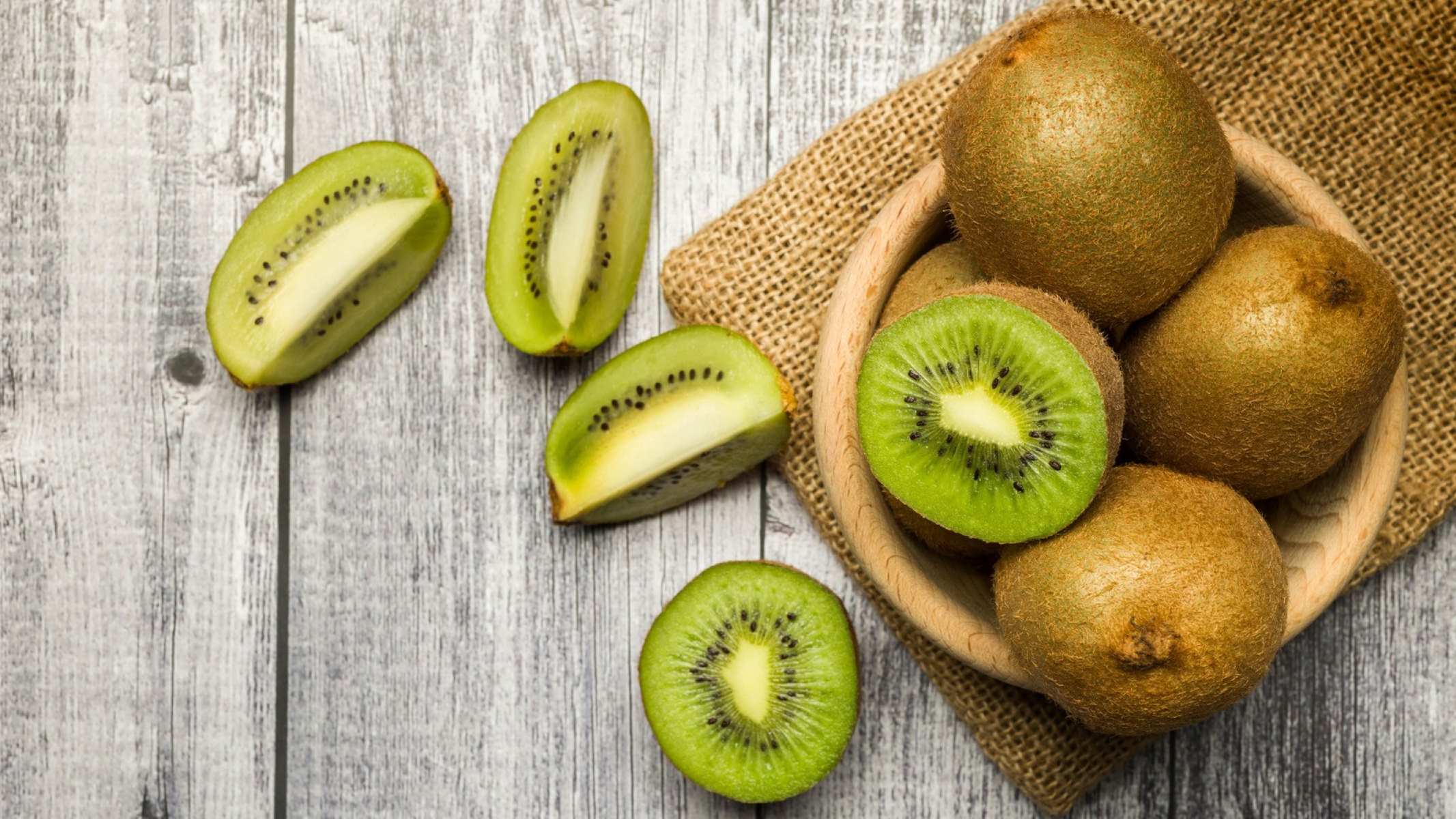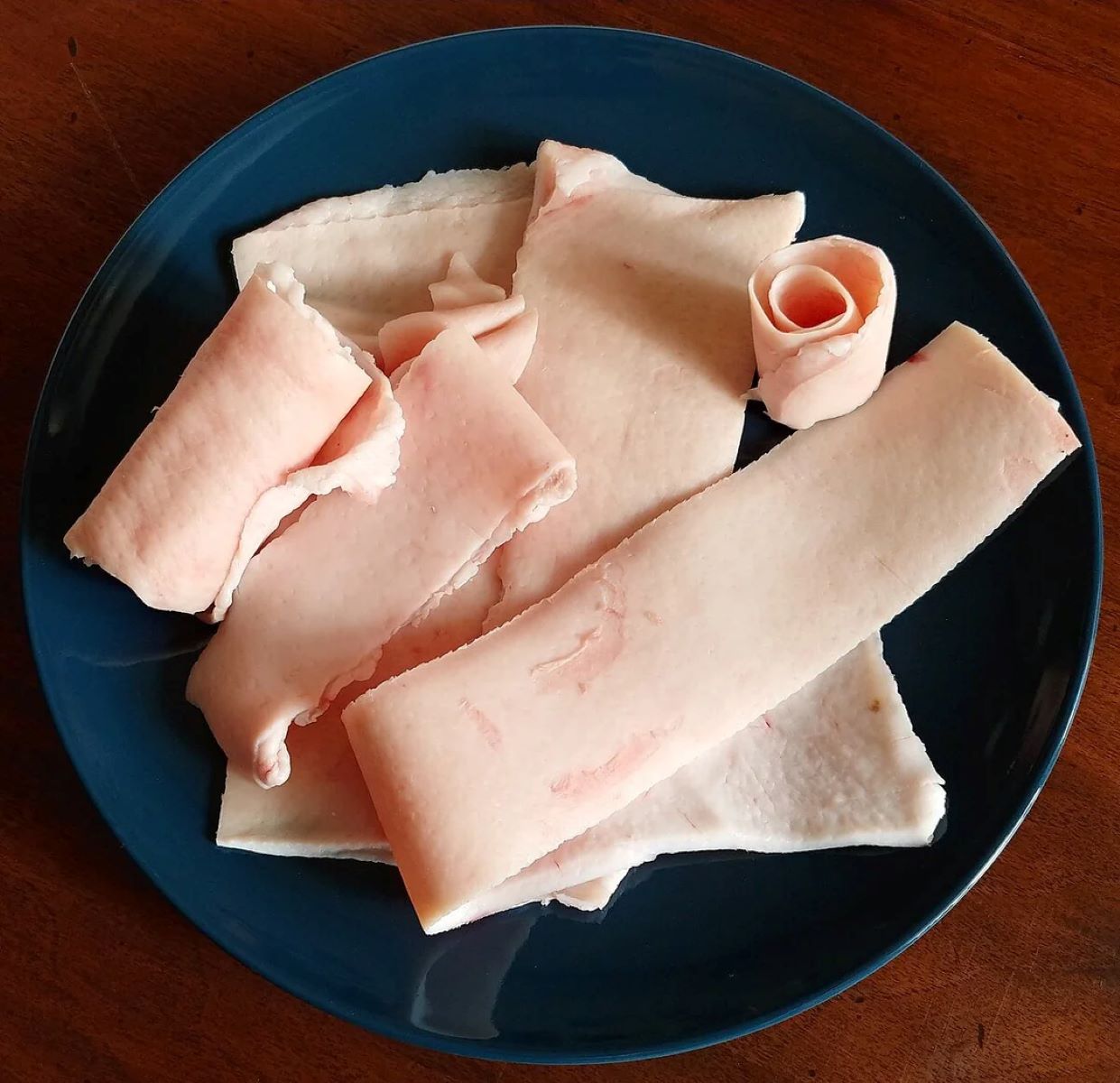Home>Food and Cooking>Surprising Discovery: Unopened Sour Cream Expired A Month Ago, But Is It Still Safe To Eat?
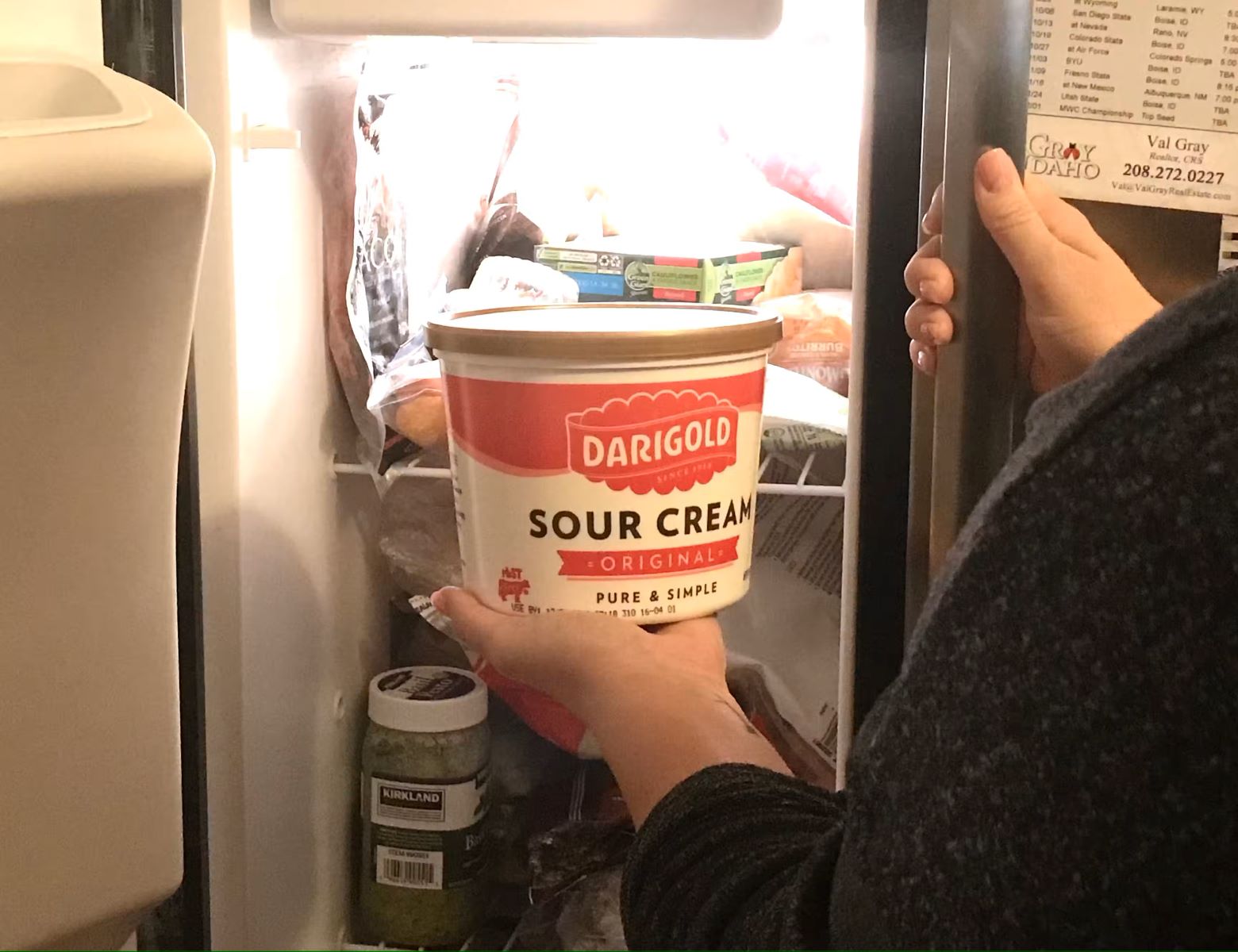

Food and Cooking
Surprising Discovery: Unopened Sour Cream Expired A Month Ago, But Is It Still Safe To Eat?
Published: January 24, 2024
Discover the surprising truth about unopened sour cream that expired a month ago. Is it still safe to eat? Get expert advice on food safety and cooking tips.
(Many of the links in this article redirect to a specific reviewed product. Your purchase of these products through affiliate links helps to generate commission for Regretless.com, at no extra cost. Learn more)
Table of Contents
Introduction
Sour cream is a versatile and popular dairy product used in a wide range of recipes, from creamy dips to decadent desserts. However, like all perishable items, sour cream comes with an expiration date, which can lead to questions about its safety and quality beyond that date. Many of us have encountered the scenario of discovering an unopened container of sour cream in the refrigerator, only to realize that its expiration date has passed. This may raise concerns about whether it is still safe to consume.
In this article, we will delve into the intriguing topic of expired sour cream and explore the factors that influence its shelf life. We will also discuss the signs of spoilage to watch out for and address the burning question of whether it is safe to eat sour cream that has exceeded its expiration date. Additionally, we will provide valuable insights into the proper storage of sour cream to help prolong its freshness and maintain its quality.
Whether you are a cooking enthusiast, a health-conscious individual, or someone who simply wants to avoid unnecessary food waste, understanding the nuances of sour cream expiration dates is crucial. By the end of this article, you will have a comprehensive understanding of the safety and quality considerations associated with expired sour cream, empowering you to make informed decisions when encountering this common kitchen dilemma.
Read more: Expired Tofu: Is It Still Safe To Eat?
Understanding Sour Cream Expiration Dates
Sour cream, a dairy product made by fermenting regular cream with lactic acid bacteria, is a staple in many kitchens due to its creamy texture and tangy flavor. Like most perishable foods, sour cream is labeled with an expiration date to indicate its expected shelf life. Understanding these expiration dates is essential for ensuring the safety and quality of the product.
The expiration date on a container of sour cream serves as a guideline for its freshness and edibility. It is typically determined based on the product's processing, packaging, and expected storage conditions. Manufacturers conduct rigorous testing to establish a reasonable timeframe within which the sour cream is expected to retain its optimal quality and safety. This date is a recommendation for consumers to consume the product before it potentially starts to deteriorate in flavor, texture, or safety.
It's important to note that the expiration date is not an exact science and should be viewed as a general estimate rather than an absolute deadline. Factors such as temperature variations during transportation and storage, exposure to light, and handling practices can influence the actual shelf life of sour cream. Therefore, the expiration date should be considered alongside other indicators of freshness and spoilage.
In the next sections, we will explore the factors that can affect the shelf life of sour cream and the signs that indicate it may have spoiled. This knowledge will empower you to make informed decisions about the safety and quality of sour cream, even when it has surpassed the printed expiration date.
Factors Affecting Sour Cream Shelf Life
Several factors play a crucial role in determining the shelf life of sour cream. Understanding these factors can help us make informed decisions about the safety and quality of sour cream, especially when it has exceeded the expiration date printed on the container.
-
Temperature: The storage temperature significantly impacts the shelf life of sour cream. Ideally, sour cream should be kept refrigerated at temperatures between 35°F and 40°F (1.6°C and 4.4°C). Fluctuations in temperature can accelerate the growth of bacteria and mold, leading to spoilage. It is essential to store sour cream in the coldest part of the refrigerator to maintain its freshness.
-
Packaging: The packaging of sour cream also plays a vital role in determining its shelf life. Most sour cream is sold in airtight containers to prevent exposure to air, which can cause it to spoil more rapidly. Once the container is opened, the exposure to air increases, potentially shortening the product's shelf life. Transferring leftover sour cream to an airtight container can help preserve its freshness.
-
Quality of Ingredients: The quality of the cream used to produce sour cream directly impacts its shelf life. Fresh, high-quality cream is more likely to result in a longer-lasting sour cream product. Additionally, the presence of preservatives or stabilizers can extend the shelf life of sour cream by inhibiting the growth of spoilage microorganisms.
-
Microbial Contamination: The presence of harmful bacteria and other microorganisms can significantly reduce the shelf life of sour cream. Cross-contamination from utensils or surfaces can introduce microbes that hasten spoilage. It is crucial to always use clean utensils when handling sour cream and to ensure that the container is tightly sealed after each use to minimize the risk of contamination.
-
Exposure to Light: Exposure to light, especially ultraviolet (UV) light, can degrade the quality of sour cream and accelerate spoilage. Storing sour cream in opaque or non-transparent containers and minimizing its exposure to light can help prolong its shelf life.
By understanding these factors, we can take proactive measures to extend the shelf life of sour cream and minimize the risk of consuming spoiled or unsafe products. In the following sections, we will explore the signs of spoiled sour cream and address the pertinent question of whether it is safe to consume expired sour cream.
Signs of Spoiled Sour Cream
Identifying the signs of spoiled sour cream is essential for ensuring food safety and preventing the consumption of potentially harmful dairy products. While sour cream typically has a smooth texture and a tangy aroma, several indicators can signal that it has gone bad. By recognizing these signs, consumers can make informed decisions about whether to discard or consume sour cream that has exceeded its expiration date.
Visual Changes
One of the primary visual indicators of spoiled sour cream is the presence of mold or unusual discoloration. If you notice any green, blue, or black spots on the surface of the sour cream, it is a clear sign that mold has begun to develop. Additionally, any significant changes in color, such as a yellowish or pinkish hue, can indicate spoilage. Fresh sour cream should maintain a consistent white or off-white color, and any deviations from this may suggest deterioration.
Read more: Surprising Discovery: Year-Old Marshmallows Found In Pantry – Are They Still Safe To Eat?
Texture and Consistency
Spoiled sour cream may exhibit alterations in texture and consistency. When sour cream starts to spoil, it can become excessively watery or develop a curdled appearance. Instead of a smooth and creamy texture, you may notice separation or lumps forming within the product. These textural changes are indicative of microbial activity and can render the sour cream unpalatable and potentially unsafe to consume.
Odor
The aroma of sour cream is another key indicator of its freshness. While sour cream naturally possesses a tangy and slightly acidic scent, any noticeable sour or rancid odors are a red flag for spoilage. If the sour cream emits an unpleasant or off-putting smell, it is likely no longer suitable for consumption. Trusting your sense of smell is crucial in determining whether sour cream has surpassed its peak freshness.
Taste
Lastly, the taste of sour cream can reveal its condition. Fresh sour cream should have a pleasant, tangy flavor with a subtle richness. If you detect any sourness that is more pronounced than usual or an off-flavor reminiscent of spoilage, it is best to refrain from consuming the product. An unpleasant or sour taste is a strong indication that the sour cream has deteriorated and should be discarded.
By remaining vigilant for these signs of spoiled sour cream, consumers can make informed decisions about the safety and quality of the product, particularly when confronted with expired sour cream. Understanding these indicators empowers individuals to prioritize food safety and minimize the risk of consuming compromised dairy products.
In the subsequent section, we will address the pressing question of whether it is safe to consume expired sour cream, shedding light on the considerations and precautions associated with this common culinary dilemma.
Is It Safe to Eat Expired Sour Cream?
The prospect of consuming expired sour cream may evoke concerns about food safety and the potential risks associated with consuming dairy products past their expiration dates. However, the safety of eating expired sour cream depends on several critical factors that warrant careful consideration.
When evaluating the safety of consuming expired sour cream, it is essential to assess the product's condition based on the signs of spoilage discussed earlier. Visual inspection for mold, unusual discoloration, or texture changes, along with assessing the aroma and taste, can provide valuable insights into the sour cream's freshness. If the sour cream exhibits any of the aforementioned signs of spoilage, it is advisable to err on the side of caution and refrain from consuming it, even if it is only slightly past the expiration date.
While the expiration date serves as a general guideline for the product's freshness, it does not necessarily indicate an abrupt loss of safety or quality immediately after that date. In many cases, unopened sour cream can remain safe for consumption for a reasonable period beyond the expiration date, especially if it has been consistently stored under optimal refrigeration conditions and shows no signs of spoilage.
It is important to note that the expiration date primarily pertains to the unopened shelf life of the product. Once the sour cream container is opened, its shelf life may be shorter due to increased exposure to air and potential contamination. Therefore, the condition of the sour cream, as determined by visual and sensory assessments, becomes even more critical when considering the safety of consuming expired sour cream.
Additionally, individuals with compromised immune systems, pregnant individuals, and young children should exercise heightened caution when consuming expired dairy products. While the risks associated with consuming slightly expired sour cream may be minimal for healthy individuals, those with specific health considerations should prioritize food safety and adhere to stricter guidelines.
In summary, the safety of eating expired sour cream hinges on a thorough evaluation of the product's condition, including visual, olfactory, and gustatory assessments. When in doubt, it is advisable to discard sour cream that shows any signs of spoilage, even if it is only marginally past the expiration date. By exercising prudence and attentiveness to the product's freshness, consumers can make informed decisions about the safety of consuming expired sour cream, thereby minimizing potential health risks.
In the subsequent section, we will delve into the best practices for storing sour cream to prolong its shelf life and maintain its quality.
Proper Storage of Sour Cream
Proper storage is paramount to preserving the freshness and quality of sour cream, ultimately extending its shelf life and minimizing the risk of premature spoilage. By adhering to recommended storage practices, consumers can optimize the longevity of their sour cream and enjoy its creamy texture and tangy flavor for an extended period. Here are essential guidelines for the proper storage of sour cream:
-
Refrigeration: Upon purchase, it is crucial to promptly refrigerate sour cream to maintain its freshness. Store unopened containers of sour cream in the coldest part of the refrigerator, typically at temperatures between 35°F and 40°F (1.6°C and 4.4°C). Consistent refrigeration helps inhibit the growth of harmful microorganisms and preserves the product's quality.
-
Airtight Containers: When handling leftover sour cream, transfer it to an airtight container to minimize exposure to air, which can hasten spoilage. A tightly sealed container helps preserve the creamy texture and prevents the absorption of odors from other foods in the refrigerator.
-
Avoid Freezing: While freezing sour cream is technically possible, it can significantly alter its texture and consistency. Frozen sour cream may separate and become grainy upon thawing, resulting in an undesirable mouthfeel. Therefore, it is advisable to refrain from freezing sour cream unless it is intended for use in cooked or baked dishes where texture changes are less noticeable.
-
Shield from Light: Protect sour cream from prolonged exposure to light, particularly ultraviolet (UV) light, as it can degrade the product's quality. Storing sour cream in opaque or non-transparent containers helps shield it from light, preserving its freshness and flavor.
-
Check Expiration Date: Before purchasing sour cream, always check the expiration date to ensure that you are selecting the freshest product available. Additionally, prioritize consuming sour cream before its expiration date to enjoy it at its peak quality.
By adhering to these storage guidelines, consumers can maximize the shelf life of sour cream and minimize the risk of premature spoilage. These practices not only contribute to food safety but also help reduce food waste by ensuring that sour cream remains fresh and enjoyable for an extended period.
Incorporating these storage recommendations into daily culinary routines empowers individuals to maintain the optimal quality of their sour cream, enhancing their culinary experiences and promoting responsible food management practices.
Conclusion
In conclusion, the topic of expired sour cream unveils a nuanced landscape of food safety, quality considerations, and practical storage practices. The journey through understanding sour cream expiration dates, the factors influencing its shelf life, signs of spoilage, and the safety of consuming expired sour cream has provided valuable insights for consumers navigating this common culinary dilemma.
It is evident that while the expiration date serves as a guideline for sour cream freshness, it is essential to complement this information with visual, olfactory, and gustatory assessments to determine the product's condition accurately. By remaining vigilant for signs of spoilage such as mold, discoloration, texture changes, off-putting odors, and unusual flavors, consumers can make informed decisions about the safety and quality of sour cream, particularly when it has surpassed the printed expiration date.
The safety of consuming expired sour cream hinges on careful evaluation, especially for vulnerable individuals with specific health considerations. While healthy individuals may tolerate slightly expired sour cream with minimal risk, those with compromised immune systems, pregnant individuals, and young children should exercise heightened caution and adhere to stricter food safety guidelines.
Moreover, the proper storage of sour cream is integral to prolonging its shelf life and preserving its quality. Refrigeration, the use of airtight containers, shielding from light, and avoiding freezing are essential practices that contribute to maintaining the freshness and flavor of sour cream, ultimately minimizing food waste and promoting responsible food management.
By embracing these insights and integrating them into daily culinary routines, consumers can enhance their understanding of sour cream expiration, prioritize food safety, and contribute to sustainable food practices. The knowledge gained from this exploration empowers individuals to make informed decisions about the safety and quality of sour cream, fostering a culture of mindful consumption and culinary appreciation.
In essence, the enigma of expired sour cream serves as a gateway to deeper insights into food preservation, safety considerations, and the harmonious coexistence of culinary enjoyment and responsible consumption. By embracing a holistic approach to understanding and managing expired sour cream, consumers can embark on a journey of culinary empowerment, informed decision-making, and a renewed appreciation for the intricacies of food preservation and quality maintenance.
